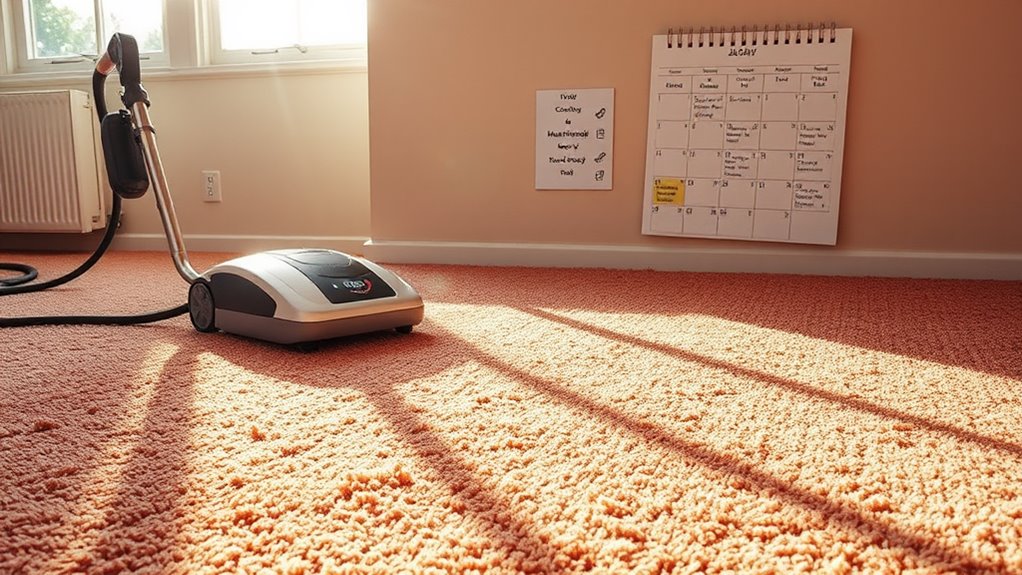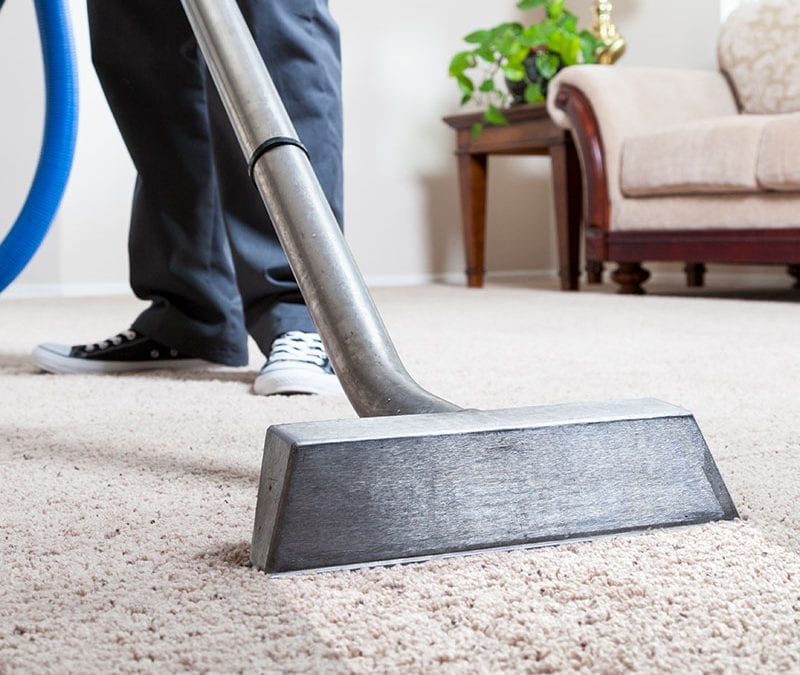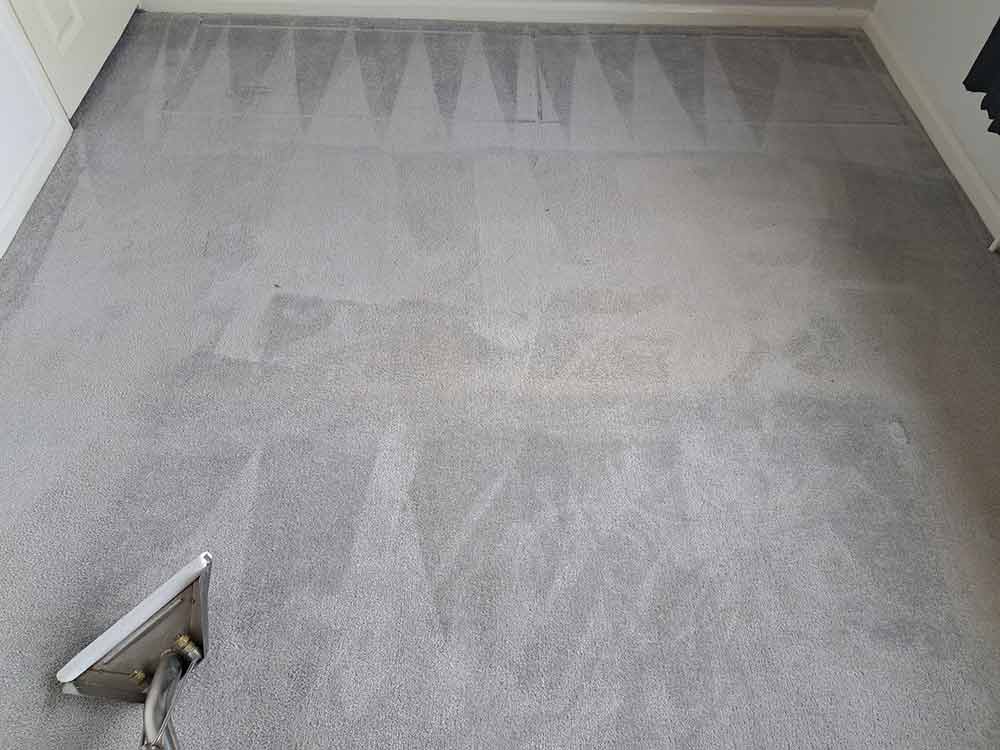Did you know that the lifespan of your carpet can vary dramatically based on its material? Understanding how often you should clean your carpet is key to maximizing its longevity and maintaining a healthy home environment. While you might think a simple vacuum is enough, the truth is more complex than that. Factors like traffic patterns and carpet quality can influence how frequently you should schedule a deep clean. Curious about the specific guidelines that could save you money and enhance your indoor air quality?
Factors Impacting Carpet Lifespan
When it comes to carpet longevity, several key factors greatly impact its lifespan. Your choice of material plays an important role; for instance, wool carpets can endure for over 20 years with proper care, while cotton tends to last only 5 to 10 years. The density of the fibers also matters, as denser carpets typically outlast those with lower quality.
Environmental conditions further influence durability. Prolonged sunlight exposure can fade carpet colors and weaken fibers, while high humidity can lead to mold and mildew growth. To combat this, consider using UV-blocking window films and ensuring proper ventilation.
Temperature fluctuations can also affect the integrity of carpets, making it essential to maintain a stable environment.
Regular maintenance practices are vital as well. Vacuuming frequently removes dirt and debris, while professional cleaning helps eliminate deep-seated stains. Quick stain removal prevents permanent damage, ultimately extending your carpet's lifespan. Additionally, high traffic areas require more frequent cleaning to prevent dirt from embedding in carpet fibers, further enhancing durability.
Lifespan by Carpet Quality
The lifespan of carpet largely hinges on its quality, with different materials exhibiting varying durability characteristics. High-quality options like nylon and wool stand out for their longevity and performance. Nylon carpets, known for their durability, typically last 10-15 years under average traffic conditions. They're ideal for high-traffic areas due to their strength and resistance to wear. On the other hand, wool carpets offer a luxurious feel and can last up to 25 years with proper care, although they may wear quicker in busy spaces.
Here's a comparative overview of carpet lifespans based on quality:
| Carpet Type | Lifespan (Years) | Key Features |
|---|---|---|
| Nylon | 10-15 | High durability, flexible |
| Wool | Up to 25 | Luxurious, natural insulation |
| Polyester | 7-12 | Soft, stain-resistant |
| Olefin | 5-10 | Budget-friendly, outdoor use |
| Berber | 10-15 | Durable, looped construction |
Understanding these differences helps you choose the right carpet for your space, balancing aesthetics with durability for peak longevity. Regular carpet cleaning is essential to maintain the quality and prolong the lifespan of your carpets.
Cleaning Frequency Guidelines
Maintaining clean carpets is essential for both aesthetics and longevity, and the frequency of cleaning depends greatly on factors like foot traffic and household dynamics.
To develop effective cleaning schedules, you should consider using frequency charts tailored to your specific situation.
For low-traffic homes, aim to clean carpets every 12 to 18 months. In moderate-traffic settings, a cleaning every 6 to 12 months will suffice. If you live in a high-traffic environment or have pets, increase your cleaning frequency to every 3 to 6 months. Homes with allergy sufferers should also adhere to this more frequent schedule to minimize allergens.
Certain areas within your home require particular attention. Entryways and hallways, for example, experience heavier foot traffic and should be cleaned more often. Bedrooms, however, can be cleaned less frequently, around every 12 to 18 months.
Environmental factors such as climate and humidity can further affect your cleaning needs. Additionally, regular professional cleaning not only enhances appearance but also helps in removing embedded dirt and allergens, contributing to a healthier indoor environment.
Regular maintenance practices, like vacuuming and spot cleaning, can extend the time between professional cleanings, ensuring your carpets remain in prime condition.
Indicators for Carpet Replacement
Carpet replacement isn't just about aesthetics; it's essential for maintaining a healthy living environment. Recognizing wear indicators can help you determine when it's time for a replacement. Here are key replacement signs to look for:
| Category | Indicators | Action |
|---|---|---|
| Visible Wear | Worn tracks, rips, matting | Consider replacement |
| Health Concerns | Persistent odors, mold growth | Replace for health safety |
| Stains & Odors | Unremovable stains, lingering odors | Time for a new carpet |
If you notice significant damage like rips or persistent odors from pets or moisture, these are clear replacement signs. Additionally, if your carpet's age exceeds the manufacturer's warranty—typically around 10 years—it's wise to evaluate its condition. In high-traffic areas, wear can become evident in just 5-7 years. Finally, if you see bald spots or matting, it may indicate that your carpet's fibers are beyond recovery. Addressing these wear indicators promptly not only enhances your space's aesthetics but also helps maintain a healthier indoor environment. Regular cleaning can prolong carpet lifespan and improve indoor air quality.
Advantages of Regular Maintenance

Over time, regular maintenance of your carpet can greatly enhance its longevity and overall appearance. By incorporating effective carpet care practices, you can considerably extend the lifespan of your flooring. Regular cleaning removes dirt and debris, which not only protects the fibers but also preserves the color and texture of your carpet.
Moreover, maintaining your carpet improves indoor air quality by eliminating trapped pollutants, allergens, and toxic gases. This contributes to a healthier living environment, reducing respiratory issues and allergies. Proper maintenance also prevents mold growth, which can occur in moist conditions, further safeguarding your home's atmosphere. Regular carpet cleaning significantly enhances workplace productivity, ensuring that the environment remains conducive to both work and relaxation.
To make the most out of your carpet care efforts, consider these maintenance tips: vacuum high-traffic areas at least twice weekly and address stains promptly with a gentle detergent solution.
Using area rugs and establishing a 'no shoes' policy can also help minimize dirt accumulation. Additionally, scheduling professional deep cleaning sessions at least once a year will guarantee your carpet remains fresh and vibrant.
Adhering to these maintenance tips allows you to enjoy a beautiful, healthy carpet for years to come.
Professional Cleaning Insights
When considering the longevity of your flooring, professional cleaning plays an essential role in preserving both its appearance and structural integrity.
Regular carpet maintenance not only enhances the look of your carpets but also extends their lifespan by effectively removing dirt, allergens, and stains.
To optimize your cleaning schedule, keep these insights in mind:
- Foot traffic matters: High-traffic areas need cleaning every 3 to 6 months, while low-traffic spaces can get by with 12 to 18 months.
- Special needs: If you have pets or children, aim for cleaning every 6 to 12 months to tackle dander and stains.
- Follow manufacturer guidelines: Adhering to recommended cleaning frequencies helps maintain warranties and guarantees your carpets stay in top condition.
- Customized plans: Professional cleaners can tailor their services based on your specific needs, using appropriate cleaning techniques for different carpet materials.
Additionally, investing in professional services can significantly enhance the quality of your carpet maintenance routine.
Incorporating these practices into your carpet maintenance routine won't only keep your home looking fresh but also protect your investment over time.
Regular professional cleaning is key to achieving these results.
Frequently Asked Questions
What Factors Influence the Choice of Carpet Material?
When choosing carpet materials, consider carpet fibers' durability, environmental considerations like humidity and temperature, and foot traffic levels. These factors impact longevity and maintenance needs, guiding your decision for ideal performance and aesthetic appeal.
How Does Humidity Affect Carpet Maintenance?
Think of humidity as a silent thief, stealing your carpet's lifespan. High humidity levels create a perfect environment for carpet mold, leading to damage. You must manage moisture to protect your carpet's beauty and durability.
Can I Clean Carpet Myself Instead of Professionally?
You can attempt DIY cleaning, but professional services often guarantee deeper, more effective results. While DIY methods may seem cost-effective initially, they can fall short, potentially damaging your carpet and requiring more frequent cleaning.
What Are the Costs Associated With Carpet Cleaning?
When considering costs associated with carpet cleaning, you'll find professional services range from $0.25 to $0.50 per square foot. Cleaning frequency impacts overall expenses, especially with add-on treatments like stain prevention or deep cleaning.
How Do I Choose the Right Carpet for My Home?
To choose the right carpet for your home, evaluate carpet types based on durability ratings. Consider factors like foot traffic and household needs, ensuring you select a material that balances comfort, longevity, and maintenance requirements effectively.
Conclusion
In conclusion, the longevity of your carpet hinges on material quality and cleaning frequency. Neglecting regular maintenance can turn your once-vibrant flooring into a dingy, unrecognizable mess in the blink of an eye. Imagine sacrificing a beautiful, cozy home for a worn-out carpet that screams neglect! By adhering to cleaning guidelines and replacing your carpet when needed, you'll not only preserve its beauty but also guarantee a healthier environment for you and your loved ones. Don't let that happen!



